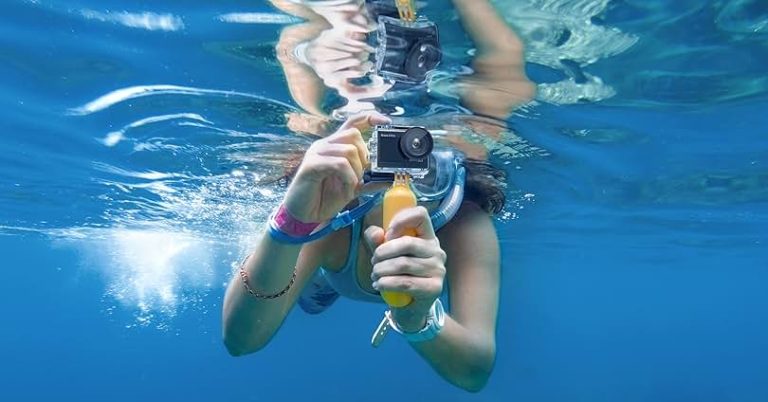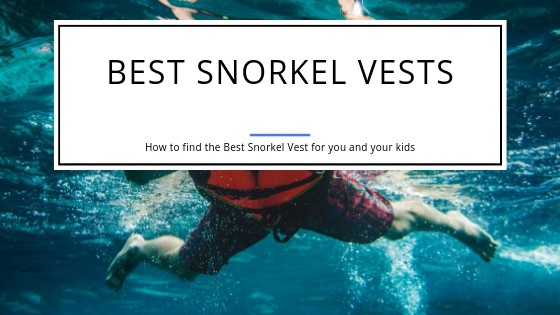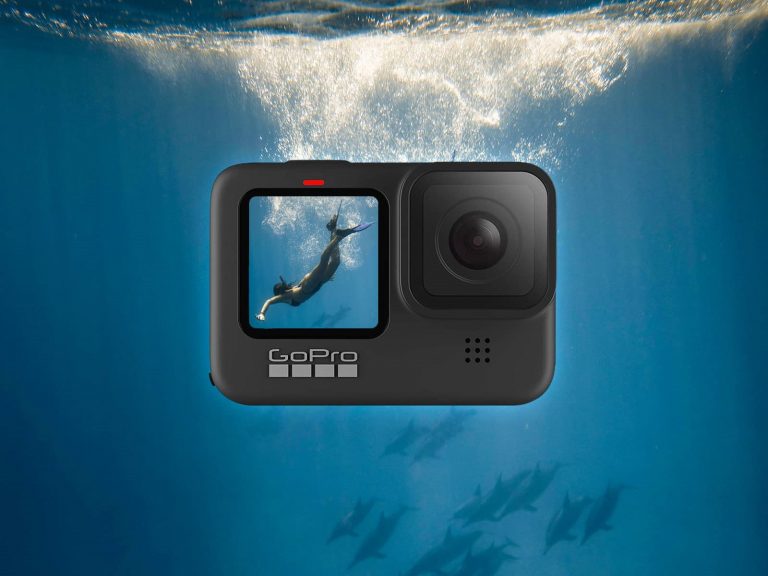The quality of your snorkeling experience dramatically improves with the best snorkeling fins. We’ve been snorkeling for almost a decade, and in that time, we’ve tried dozens of various models.
You’ll become tired quickly and possibly have a leg cramp if your fins are too stiff, inefficient, too small, or too huge. Here, we’ll walk you through finding the right snorkel fins for your needs. In addition, we demonstrate the top models we suggest purchasing and guide how to determine the correct size.
Why do you need snorkeling fins?
Snorkeling is a fun and accessible aquatic activity that doesn’t require expensive gear to get started. All you need is a snorkel mask to get started. But if you want the most fun and stay safe while Snorkeling, you need to invest in a quality mask, snorkel tube, and fins.
Get a good pair of the best snorkeling fins and a well-fitting mask for the most enjoyable time underwater.
You can use your legs and fins to drive yourself through the water, freeing your arms. Snorkeling fins are designed to increase swimming efficiency and facilitate movement around obstacles like coral reefs and aquatic life. Additionally, they offer the wearer some float to maintain a horizontal position and avoid fatigue in the legs.
5 Best snorkeling fins for Beginners, Intermediate and Advanced in 2023
For Snorkeling, the best fins can be chosen based on several criteria, including how well they perform, how long they last, and how well they suit the wearer’s taste. The five models below are the best snorkeling fins, in our opinion, based on other snorkelers’ feedback. They provide a comfortable fit, powerful thrust, and a small, portable design that makes them best snorkeling fins for travel.
Mares Avanti Superchannel: The Best snorkel fins for Beginners and Occasional Snorkelers
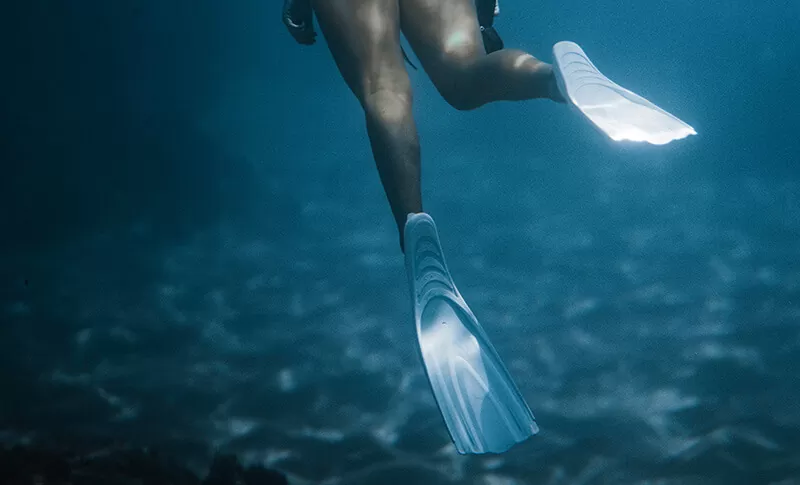
Price is most likely the most crucial factor to think about when looking for the best snorkel fins for beginners or people who only snorkel occasionally, like once or twice a year. Indeed, that does make some sense. On the other hand, we don’t want to give up too much performance.
Even if you’re starting in the Sport of Snorkeling, it’s a good idea to equip yourself with a modern snorkel fin that helps you conserve energy and generate more thrust in the water.
Mares Avanti Superchannel
Several features make the Mares Avanti Superchannel Fins an excellent choice for novice or casual snorkelers, and I strongly suggest them.
First, if you’re starting or aren’t currently spending much time in the water, you’ll appreciate that their pricing is on the lower end of the spectrum for good snorkel fins.
Next, the Avanti Superchannels aren’t like other novice snorkel fins, typically simply plain, flat, uninteresting rubber fins. That provides a bigger surface to press against the water for more excellent propulsion without doing anything to save energy or make your kicking more efficient.

The three-channel “superchannel” fin blade of the Mares Avanti Superchannel snorkel fins makes it easier for water to flow along the fin rather than against it when you paddle off, resulting in a more efficient and less exhausting fin design. You’ll have more fun and be less likely to get hurt if you do that.
In conclusion, the Avanti Superchannels are less expensive than more high-tech solutions, but I can rest assured that they will last me a long time because Mares, a reputable and long-standing snorkel gear maker, make them.
The Avanti Superchannel Full Foot (available on Amazon) features a fixed foot pocket into which you slide your foot. In contrast, the Avanti Superchannel Open Heel (available on Amazon) has a heel strap that secures your foot in the fin.
When choosing between the whole foot and open-heel snorkel fins, I recommend going with the entire foot type if you don’t need to adjust the size. Full-foot pockets are more affordable and, in my experience, more comfortable than open-heel alternatives.
The open-heel version is the best choice if you need sizing flexibility (for a growing teen or if you want to share the fins with others). To make the strap more comfortable and prevent it from chafing on your skin, you should also invest in a pair of neoprene boots like the Mares 2mm Neoprene Warm Water Boots (Amazon), which you can wear within the fins.
Pros
Cons
SCUBAPRO Seawing Nova: The Best Snorkel fins for Intermediate, Advanced and Regular Snorkelers

The goal of purchasing the best snorkel fins for intermediate or expert snorkelers (or even ordinary snorkelers) is to get the most out of your fins so that you can snorkel for more extended periods, dive deeper into the water, or swim in more challenging conditions.
I find that “split fins” and fins with a hinged design offer the most significant improvement in performance while shopping for snorkeling fins.
In recent years, split-fin designs have fallen out of favour with manufacturers, leaving you with fewer and less appealing options (Source). However, if you’re willing to spend $200 or more, the Atomic Aquatics Smoke on the Water fins (on Amazon) are the best snorkel fins you can buy.
The snorkel fins with a hinged type can be very effective as well. This fin design allows the bulk of the fin to pivot around the point where it provides the most efficient angle of attack against the water. Hinge snorkel fins have been growing in favour due to their increased effectiveness (and reduced strain for the snorkeler).
SCUBAPRO Seawing Nova
The SCUBAPRO Seawing Nova fins are my go-to hinged snorkel fins and my top pick for intermediate and experienced snorkelers (or those who snorkel more frequently).
Compared to other snorkel fins I’ve tried, the Seawing Novas offer the best price/performance ratio. You can expect to pay the price around the middle of the range for good snorkel fins, and you will notice an immediate improvement in how long you can snorkel or how easily you can blow through choppy conditions and dive under the waves.
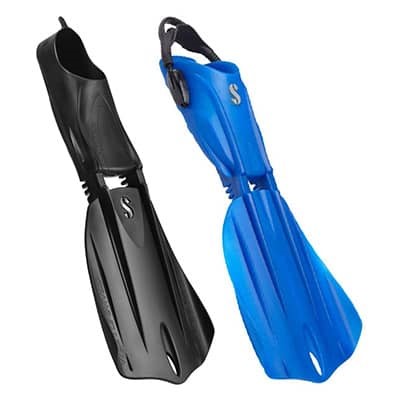
The Seawing Novas’ hinged design is a significant upgrade over standard snorkel fins (even many with channel designs).
Also, I appreciate that these fins are constructed out of monprene, a high-tech hybrid elastomer that is, according to SCUBAPRO, practically unbreakable.
Extremely lightweight and durable, Monprene has been a godsend for me because I hate having to replace gear that I finally settle on constantly. The fact that monprene snorkel fins float means you no longer have to worry about losing one as you make your way up the boat’s ladder.
Like my best snorkel fins for newbies suggestion, SCUBAPRO makes a Seawing Nova Full Foot version (on Amazon) and a Seawing Nova Open Heel version (on Amazon).
If you don’t require the sizing freedom or have a particular fondness for open-heel fins, I’d recommend going with the full-foot version for comfort and saving a few bucks, just like I do for beginners.
The open-heel version of the Seawing Nova is more expensive than the full-foot version, and you’ll need to buy a separate neoprene boot like the Mares Classic 3mm Boot (Amazon) to wear with it, but it could be worthwhile if that’s exactly what you need.
Pros
Cons
SCUBAPRO GO: The Best Snorkel fins for Travel

Since Snorkeling is typically a focus of my trips, I’m always looking for a lightweight and portable snorkeling gear.
I always keep my suitcase in mind when deciding whether snorkel fins are ideal for a trip. I usually only bring my regular fins when I check a bag (bigger than a carry-on) for a longer vacation.
Most snorkel fins are small enough to carry in checked luggage, taking up roughly as much space as one layer of clothing (though I do keep an eye on my overall bag weight), and I’d rather not compromise the great performance of my regular fins if at all possible.
When I can only bring a carry-on bag, I have to switch to the best snorkel fins designed for travel (i.e., they are a bit smaller) because conventional fins are notoriously difficult to pack.
When I switch to a travel snorkel fin for a trip, I know I’ll have to compromise on performance and be pickier about the water conditions I swim in. However, I’d like to minimize this cost as much as possible—the most efficient snorkel fins for travelling pack as much performance as possible into the smallest feasible footprint.
SCUBAPRO GO
The SCUBAPRO GO snorkel fins are the best option when I travel with only a carry-on. They’re more compact than regular snorkel fins, yet just as durable because of their monprene construction.
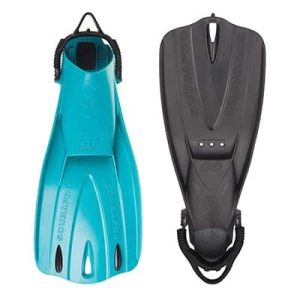
With a central panel that functions similarly to superchannel models in directing water away, and a pre-angled blade (which sort of replicates the flexes of hinged devices discussed above), these fins perform admirably for their compact size.
SCUBAPRO has two GO models, the GO Travel (on Amazon) and the GO Sport (on Amazon).
You won’t need a neoprene boot for the cheaper Travel model, but if you’re looking for maximum performance, go for the slightly more expensive Sport model, which works best with a neoprene boot like the Cressi Minorca Neoprene Anti-Slip (Amazon).
The SCUBAPRO GO Travel and the SCUBAPRO GO Sport are both excellent products. Whether or if the Sport is the best snorkel fins for your travels depends on your budget and level of performance lust, as you will noticeably boost performance and efficiency while in the water (and be less exhausted when you come out) with the Sport.
Pros
Cons
Atomic Aquatics Split: Best Snorkel fins for performance:
It would help if you practiced flutter kicks to get the most out of your new Atomic fins. Propulsion depends more on speed than power, so even newcomers can quickly get the hang of things and start flying. Fins that are both sturdy and easy to wear, thanks to their closed-heel and open-toe style.
These are the best fins for Snorkeling if your sessions often go long and you must swim a lot.
Atomic Aquatics Split
The Atomic Aquatics Split snorkel fins are an excellent choice if you’re an experienced snorkeler who wants to improve your underwater flexibility.
The wide slash down the blade’s middle greatly reduces resistance to water and makes kicking seem smooth. But unlike with most split fins, the extra-long blades still offer a lot of thrusts, so the design isn’t at the expense of power.

Atomic Aquatics High Performance Full Foot Split Fin
The blades are made from a combination of flexible and rigid portions, providing incredible responsiveness, while the outside rails are robust to maximize energy release for maximum kicking effectiveness. These fins are ideal for diving because they combine power and precision.
The open-heeled fins include a surprisingly pleasant spring strap that molds to your foot for maximum security, and their roomy toe holes are another nice touch that prevents your feet from feeling squished.
These fins are very lightweight (especially considering the blades’ length), but if you’re trying to cut down on your pack weight even further, you should opt for the closed-heel variant instead.
Both come in various colours, and the overall design is one we consider to be among the most fashionable on the market. Our main complaint is that the Atomics Aquatics is not cheap, but if high-performance fins are what you’re looking for, you won’t be let down.
Pros
Cons
CRESSI CLIO: Best Snorkeling fins for Durability
Cressi has released a popular version of a model that has become a classic. Despite being on the market for over 20 years, the Everlasting snorkel fin (also known as Cressi Clio fins) remains a top choice among snorkeling fins.
With their sensitive composite blades and custom, computer-designed foot compartments, these conventional closed-heel fins are great for swimming and Snorkeling. Cressi Clio is great for the whole family because it comes in a rainbow of colours and sizes ranging from extra-small for kids to extra-extra-large for men.
Cressi Clio – Everlasting Snorkel Fins
The Cressi Clio fins are hard to beat regarding portability, cost, and adaptability. , and you should expect them to outlive you by several decades.

A closed-heel design and lightweight materials make these fins a great choice for barefoot snorkelers who want to avoid the discomfort of shoes.
Even better, the water will seem to fly under your feet as the long blades propel you forward with little effort. These fins are so effective that they can be used for duck diving and even scuba diving (as long as the conditions aren’t too chaotic), making them a very flexible option for snorkelers.
The full-length blades are only moderately short, yet this fact, combined with the blades’ small weight, keeps them extremely portable. They are compact enough to be carried in a daypack to the beach for an unexpected snorkeling excursion.
In addition, they are among the most durable snorkeling fins we’ve seen because they don’t have any unnecessary bells, whistles, or complicated straps and instead rely on a straightforward yet sturdy EVA construction.
The lack of a buckle also makes it impossible to modify the size to fit tiny feet, but other than that, they’re great! But other than that, you can’t go wrong with these strong and durable snorkeling fins that are surprisingly cheap.
Pros
Cons
Snorkeling Fins Buyers Guide – How to Choose the Best One
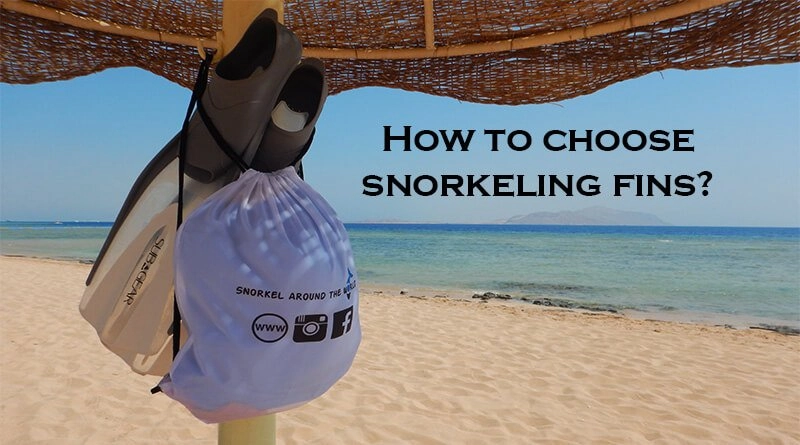
Open Heel or Closed Heel
If you’re going Snorkeling, you’ll want to consider whether you’d be more comfortable with an open-heel or closed-heel fin.
Open-heel fins are good for cooler seas because they allow you to wear booties with them. They’re typically more effective than closed-heel fins, although they can be painful to bring along on the road.
Closed-heel fins resemble shoes with flippers and do not require booties. They are more portable and more suited for trips.
Materials
The Snorkeling fins can be constructed from many different materials. Most are built with Monprene and other thermoplastics, and nearly all feature rubber components.
Some fins, such as the Viper 2s and Fugas, contain cushioned foot chambers made of rubber that can bend and flex with the diver’s movements.
The straps of Oceanreef Accels are made of silicone, which is more durable than rubber, while maintaining the same level of comfort.
While preserving its shape and rigidity, this material allows the fin to bend throughout the finning process, generating the necessary power for propulsion.
Weight
Fins can be heavy or light depending on their design and the material they’re made from. We suggest lighter fins for Snorkeling because they are easier to carry around.
Blades
The length and design of the blades are also important considerations when picking out a set of Snorkeling fins.
More efficient energy utilization can be achieved with longer blades due to their increased surface area. However, shorter blades are preferable when packing for a trip because they are more manageable.
It is also crucial to think about the type of blade. One can save energy and work more quickly with curved, inclined, or rounder blades. An increase in thrust is achieved at the expense of increased energy consumption by using blades with a more rectangular cross-section.
The slanted fins of the Tusa Solla fish allow the kicks to be more concentrated, allowing the fish to move forward more efficiently.
Vented or not vented blade
The blade’s ventilation is the last factor when selecting Snorkeling fins.
Vents in the fins let water flow more easily, requiring less work from the fisherman and conserving energy over time. This improves efficiency but may cause power loss. While non-vented fins provide greater power, they also demand more effort to operate, which can lead to fatigue in the water.
Types of snorkel fins

Closed-foot fins and open-heel fins with adjustable straps are the two main categories. Some types are so deep or closed that you can wear them without socks or shoes, making them ideal for usage in hot water. The open-foot variants can be worn with neoprene boots for scuba diving or swimming in colder water due to a larger foot pocket and an adjustable strap around the heel.
Closed foot fins

A closed-foot fin, sometimes referred to as a “full-foot fin,” is ideal if you do most of your Snorkeling in warm water. Snorkeling fins are typically designed with a completely open toe so they may be slipped on quickly and easily.
They’re easy on the back and the pack, and they’ll get you far. It’s vital to get the right size, though open-toe varieties give you more leeway, and neoprene snorkel booties can help if the foot pocket is too big.
Open foot fins
These styles (also known as the open-heel type) are often designed for divers and have an adjustable heel strap and a neoprene boot. Thermoregulation is hindered by cold water, so wearing a bootie is a must.
However, open-heel fins add extra weight, and diving boots aren’t included. You shouldn’t bother with open-foot fins and booties if you want to swim on the surface. If you wear neoprene boots while swimming, your feet will be completely dry the entire time.
On the other hand, you can get adjustable snorkel fins, which provide you with more sizing options and are, therefore, ideal if the fins are used by multiple people in the same family or children whose feet are still developing. The snorkel fin has an open heel so you can use it with or without shoes. However, neoprene socks are recommended for usage with this product to reduce discomfort caused by abrasion.
Split fins vs. paddle fins
Paddle fins and split fins are two types of fins that fall into the categories mentioned earlier. Normal fins are paddle fins. In the center, splits are divided. According to the statistics, most of the top Snorkeling fins are paddle fins with bendable but powerful blades.
Split Fins For those with leg or joint issues, split fins are a great option. The split blades make for swift, fatigue-free footwork. Having them in the water simplifies swimming but also reduces your speed. So, don’t go swimming with split fins in a riptide! You can use them in calm, shallow waters.
How to choose the right size?
The best Snorkeling fins are the ones you can swim in with the least discomfort. That’s why it’s crucial to consider the size. Your fin doesn’t have to be a perfect fit because the rubber foot compartments are stretchy. Choose a fin with an open toe and a full foot pocket for maximum longevity.
Your snorkel fins should fit comfortably with a closed or open heel. Suppose you plan on wearing them with neoprene socks 2-3 millimeters thick, which is highly recommended to prevent irritation and rubbing. In that case, you need either buy the socks separately or a size larger than your normal shoe size.
We suggest looking for best swim fins for Snorkeling on Amazon, where you may get a wide variety of models from top manufacturers and, more importantly, acquire extra small and XXL sizes, which are hard to come by in stores.
Tips on how to choose the right size:
- Check to determine if there is room for your heel to move in the shoe’s end pocket. Like regular shoes, if you can get a finger into the opening, it’s an acceptable size.
- Get a smaller size if the difference is too great.
- If you can stand on your toes without your fin slipping off your heel, they are a decent size.
- If you try them on and they feel immediately snug, size up. Muscle cramps are another unpleasant side effect of having a tiny fin.
- If your heel comes out without much effort, it’s probably huge. Just wear some neoprene socks or something to help out!
- Make sure the rubber soles aren’t pressing down on your toes.
What is the difference between Snorkeling fins and scuba diving fins
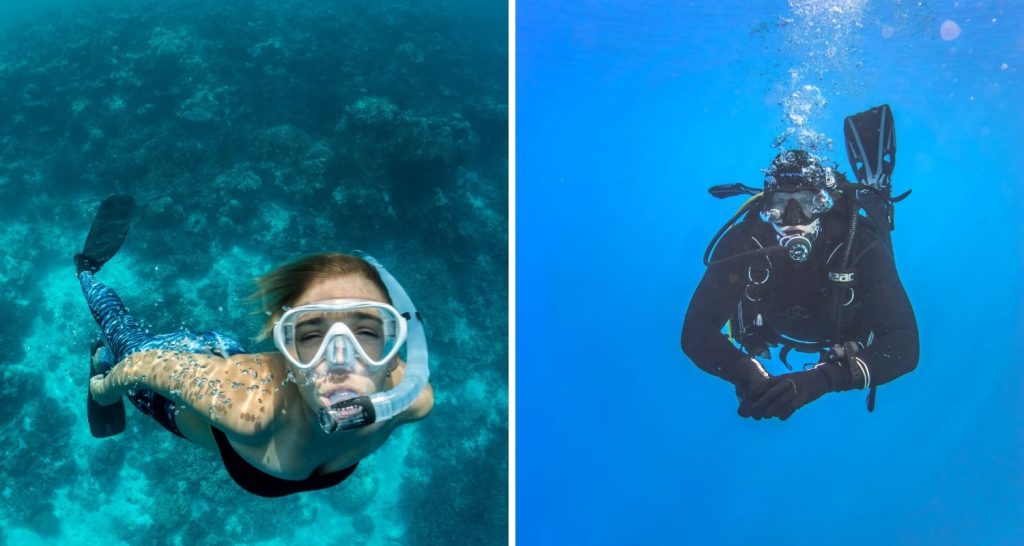
Is it possible to use a diving fin for Snorkeling and vice versa? Snorkeling with diving fins is better than going without fins, so no one will advise you not to do it. However, if you have the choice, stick to using Snorkeling fins when you’re out on the water.
The Snorkeling fin and the scuba diving fin may look similar at first glance. But upon further inspection, one may see that they are tailored to fulfill various needs:
Snorkel Fins
- Blades are too weak for underwater use and only work well on the surface.
- Easy portability because of their lightweight construction.
- Most full-foot designs are closed and intended for use with no socks or very thin socks.
- Soft-blade snorkel fins are portable and not particularly powerful, but they do the job.
Diving Fins
- Blades thicker and stiffer are more effective underwater but take more force to kick.
- Fins with an open heel are made for use with neoprene shoe covers.
- Heavy and sturdy construction.
- The blades are divided or have channels to make diving to vast depths less of a challenge.
FAQs
Conclusion
When we choose the best snorkel fins for our objectives, we improve our Snorkeling immediately and increase our visibility in the water and our safety and trust in the sea. What wonderful news!
In 2023, a wide variety of snorkel fins are available, making it difficult to choose the right one; however, the price, performance, and Durability of various fins vary depending on the diver’s level of expertise. You should be able to choose the best snorkel fin after reading this advice, regardless of whether you’re a novice, intermediate, or advanced snorkeler or if you need to pack light.
Additionally, as fins and boots are wearable products, you can easily return something that doesn’t fit and order the appropriate size if you order them on Amazon, where they are normally eligible for free returns.
While Snorkeling equipment like fins and boots tend to run true to size for both sexes, sizing information is typically provided in men’s numbers in the United States. Women may need to order 1.5 sizes up from the men’s size mentioned to obtain the correct fit.




